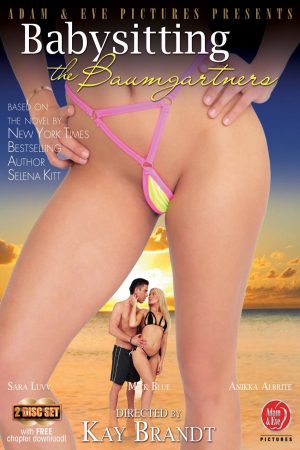by Ashley Lister
Back in November we discussed haiku here – the traditional Japanese poetic form. Haiku, as you may remember, is a form that is typified in Western writing as three lines of poetry with a distinctive 5-7-5 syllable pattern. Well, now it’s time to look at the tanka – five lines of poetry with a syllable pattern of 5-7-5-7-7.
To illustrate:
You undress for me
Exposing hidden contours
And then the fun starts
We explore our nudity
Until our climaxes come
For many writers the middle line is the essential balancing part of the tanka. Sometimes called the pivot line, this middle line can end the sentiment of the first three lines of the poem and it can begin a separate sentiment for the final three lines.
We’ve fucked for an age
Our bodies fluid with sweat
Orgasm evades
Yet seems to linger so close
Tantalisingly nearer
Of course there are ways to interpret the tanka for writers who don’t care to be bound by the rigidity of counting syllables. There are also ways to incorporate the tanka into renga poetry – collaborative writing in a similar form. But this version, as disciplined as the traditional haiku yet with a little more scope for narrative and lyricism, is well worth attempting.
I look forward to seeing your tanka in the comments box below.



Back-seat fucks are good
the quick heat, the cramped passion,
but better by far
the after-glance across space
on the journey home.
RG – lovely to see you poeming 😉 This has your typical no-nonsense vocabulary and makes good use of the pivot.
Is your last line deliberately missing two syllables?
Ash
a line of blood
follows the curve of your spine
the fall of the whip
breathy moans
filled with need
salt on my tongue
a love letter spelled out
on moist labia
you lost track of the words
but enjoyed the sentiment
a skirt hitched up
the glimpse of a stocking top
on the underground
An Angel at Islington
minding the gap
Love the heat of Remittance Girl's
Mine? bugger the syllables.
Rachel – there are few things sexier than someone throwing the rule book out of the window and producing something of quality. You and RG are proof of that 🙂
Bugger the rule book
Focus on the excitement
Think only of sex
Don't fret about syllables
Don't count passion on fingers.
Exactly so — and what a superb rejoinder 🙂
Rachel – I think there's a book of poems in the title 'bugger the rule book' 🙂
Ok, here's my attempt. I don't think it scans well at all, but the syllables are right. (I've always been good, alas, at following rules.)
Hook-Up
Eyes lock. Knowledge sparks
the gap. Cascade of fingers,
tongues, entangled limbs,
sweat-slick, breathless, yielding. One
endless night. The light turns green.
Also, a question to Ash, RG, Rachel –
How much of the tanka-writing process is inspiration, how much analysis, for you? I started with an idea, but the process of fitting the syllable counts felt quite mechanical.
Lisabet – lovely. I remember fast kissing at traffic lights 🙂
The mechanics is why I rearely write to the rules. I've written a tanka a day (plus a cinquain, haiku, senryu and sevenling) for the last ten years (too few of them erotic, alas) and the flow is always more important than the syllable count. Syllables are a very clumst way of interpreting Japanese rhythm, anyway, whatever the American Haiku Association thinks.
Lisabet – sorry for the delay in replying.
Love the hook-up, especially the enjambment of those internal lines. It's saucy and has the suggestion of a narrative.
In answer to your question: I have to agree with Rachel. The flow is always more important than the mechanical adherence to the syllable count. However, the process of thinking in syllables (rather than the usual mindset of thinking solely in words with conventional connotations/denotations) usually gets the imagination considering new ways of phrasing things.
😉